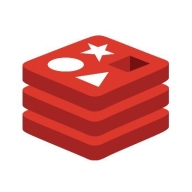
Redis and NetApp Global File Cache [EOL] operate in data management and caching, addressing different needs. Redis has the upper hand with its impressive performance and versatility.
Features: Redis features in-memory data structures enabling high-speed access, supports multiple data types for diverse applications, and offers robust persistence options. NetApp Global File Cache [EOL] focuses on file caching, provides global file access optimization, and aids in reducing latency across distributed systems.
Ease of Deployment and Customer Service: Redis benefits from quick and simple deployment with substantial community backing. NetApp Global File Cache [EOL] offers enterprise-ready deployment tailored for large infrastructure support alongside dedicated customer service.
Pricing and ROI: Redis, being open-source, delivers a cost-effective solution with excellent ROI through efficient resource use. NetApp Global File Cache [EOL], although more costly initially, yields high ROI for organizations needing robust global file sharing.

| Company Size | Count |
|---|---|
| Small Business | 11 |
| Midsize Enterprise | 3 |
| Large Enterprise | 8 |
NetApp’s proven intelligent Global File Cache allows distributed enterprises to securely consolidate silos of file servers into one cohesive global storage footprint in the public cloud, which streamlines overall IT management, significantly cuts costs and boosts business productivity on a global scale.
Redis offers high-speed, in-memory storage, renowned for real-time performance. It supports quick data retrieval and is used commonly in applications like analytics and gaming.
Renowned for real-time performance, Redis delivers high-speed in-memory storage, making it a favorite for applications needing quick data retrieval. Its diverse data structures and caching capabilities support a broad array of use cases, including analytics and gaming. Redis ensures robust scalability with master-slave replication and clustering, while its publish/subscribe pattern renders it reliable for event-driven applications. The solution integrates smoothly with existing systems, minimizing performance tuning needs. Although documentation on scalability and security could be improved, Redis remains cost-effective and stable, commonly utilized in cloud environments. Enhancing integration with cloud services like AWS and Google Cloud and refining GUI may improve usability.
What are the key features of Redis?Redis finds application across industries for tasks like caching to improve application performance and speed, minimizing database load. It enables real-time processing for session storage, push notifications, and analytics. As a messaging platform, Redis handles high traffic and supports replication and clustering for cross-platform scalability.
We monitor all In-Memory Data Store Services reviews to prevent fraudulent reviews and keep review quality high. We do not post reviews by company employees or direct competitors. We validate each review for authenticity via cross-reference with LinkedIn, and personal follow-up with the reviewer when necessary.